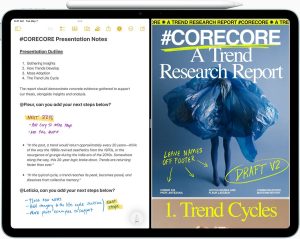Resume best practices and industry standards change over time. A recent survey sought to understand how to write a great resume by asking individuals who craft them for a living.

Image: iStock/fizkes
Crafting a quality resume is a professional balancing act. Individuals should provide enough information to detail their capabilities; however, it’s important to list these materials succinctly and clearly. After all, it’s been reported that recruiters only spend about seven seconds looking over a candidate’s resume.
Expectations and standards surrounding resume format evolve over time, and it’s important to stay abreast of these updates before submitting an application. ResumeLab surveyed 97 certified professional resume writer (CPRWs) to gain a better understanding of the best practices and mistakes applicants should avoid when drafting a resume. We’ve detailed these key findings below.
SEE: TechRepublic Premium editorial calendar: IT policies, checklists, toolkits, and research for download (TechRepublic Premium)
Resume best practices and common mistakes
In the era of remote work, a basic understanding of a host of virtual collaboration tools is a necessity in many industries; the commonly-used “skills” resume section enables applicants to illustrate these capabilities and others. Virtually all of the respondent resume writers (95%) recommend including a dedicated section pinpointing key skills; interestingly, the majority of resume writers (59%) say that it’s a bad idea for applicants to grade their skill proficiency in this section.
Nearly nine-in-10 of the resume writers believe it’s important for applicants to include “extra details” about themselves such as portfolio links, work samples, courses, and training. It’s important to ensure that this extra information highlights professional achievements. For example, more than three-quarters (77%) of the resume writers recommend against including interests and hobbies on a resume.
“The purpose of the hobbies and interest section, back in the 90s, was to add a ‘human’ touch to an otherwise robotic document. But today, that’s an obsolete practice,” explained Michael Tomaszewski, a CPRW who authored the report.
“Let’s face it, your personal interests have little to do with your work performance and it’s the latter that should define your chances of getting hired. Listing interests on a resume feels too personal and unprofessional,” Tomaszewski continued.
SEE: Resume writing tips to consider when refreshing or drafting a new CV (TechRepublic)
Professional references often play a critical role in the application and hiring process, though the survey suggests that individuals should wait to reveal references until requested by an employer. Nearly nine-in-10 of the respondents recommend against listing references on a resume, and 88% of these professional resume writers “shun” the use of the phrase “references available upon request.”
“Not only is it not customary in the US, it also validates most personal data protection regulations. When it comes to the phrase ‘references available upon request’… Come on. It’s implied they’re available,” Tomaszewski said in the report.
When drafting a new resume, job seekers are also tasked with succinctly describing their previous roles, often in a series of bullet points. A portion of the survey sought to gain a better understanding of the exact number of bullet points applicants should use to describe each position.
Overall, 27% of these professional resume writers suggest using five bullet points for each job, and about one-third (35%) of respondents said that an applicant’s work history should provide 15 years of background information if possible.
For individuals with minimal experience (five years or less), a resume should be one page in length, according to the survey. Applicants with five to 10 years of experience should draft a resume that is one or two pages in length, and candidates with a decade of work history should have a two-page resume.
Including information such as academic data will also depend on career experience. For entry-level applicants, nearly all of these resume writers (88%) recommend listing your academic GPA. However, 90% of respondents felt that listing one’s academic GPA was a “bad idea” for applicants with at least five years of experience.
SEE: Now could be a great time to switch jobs or change careers altogether (TechRepublic)
Social media is a great way for professionals to network and build their personal brands, and these platforms often play a central role in the recruiting and screening process. Requesting a candidate’s social media links is a common part of many digital job applications, and nearly all of the respondents (95%) recommended that applicants provide a link to their LinkedIn profile.
Once it’s time to submit your resume, the majority of these resume writers suggest sending the document in PDF format unless a company specifically states otherwise.
“PDFs are, generally speaking, a safer choice. Saving a text file in PDF ensures your layout stays intact across all kinds of software and devices,” Tomaszewski said.
Also see
Source of Article




